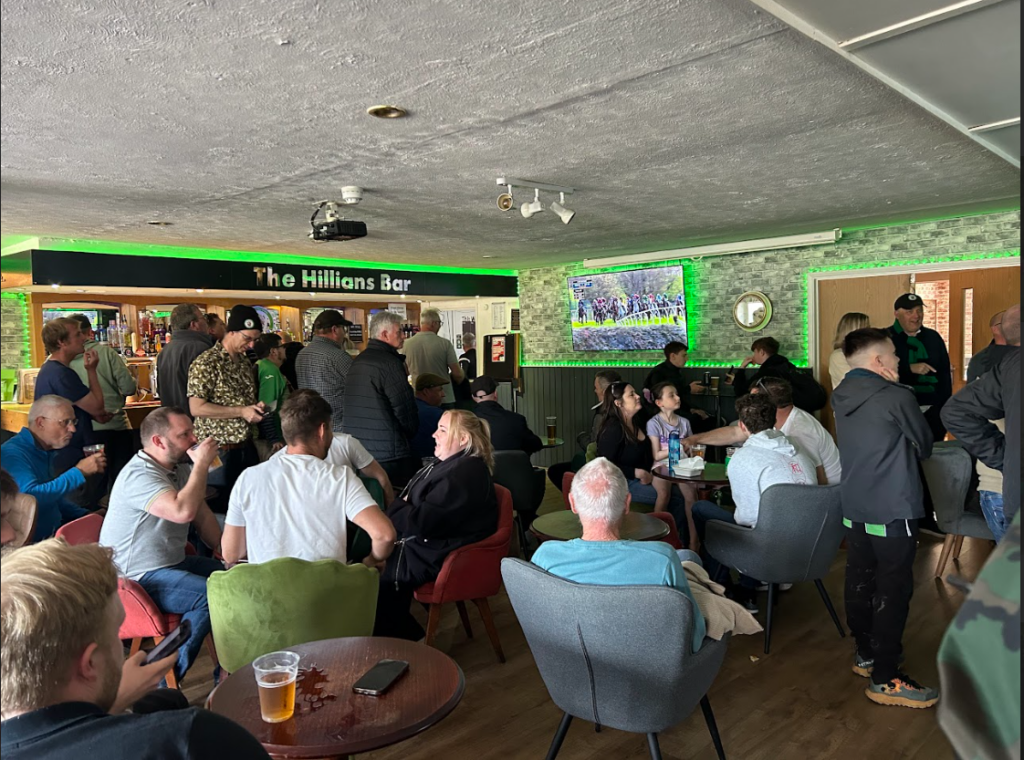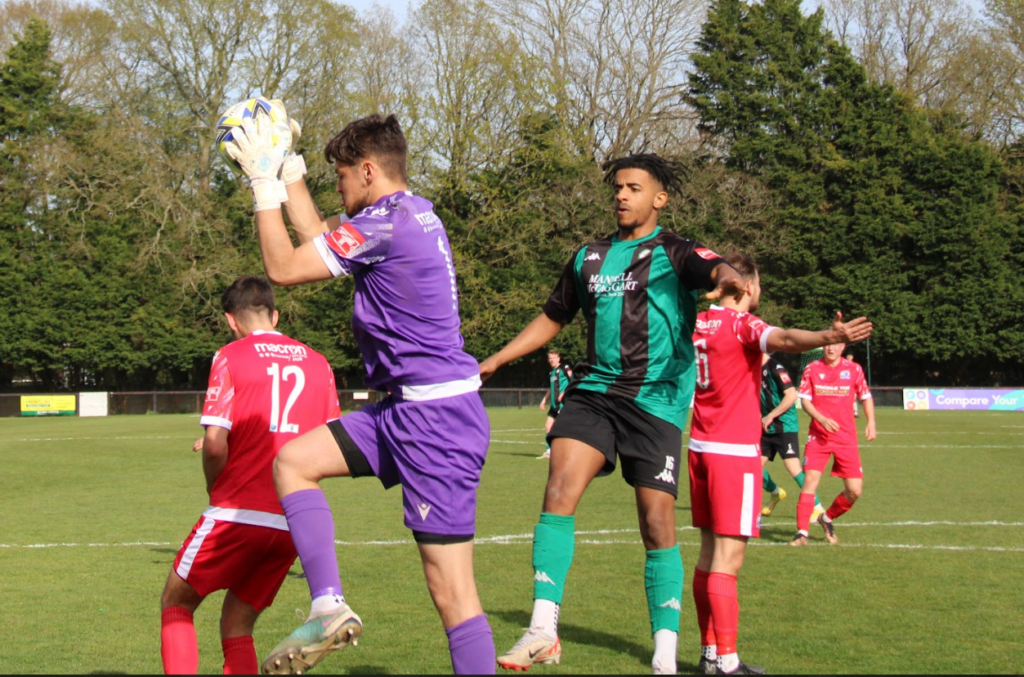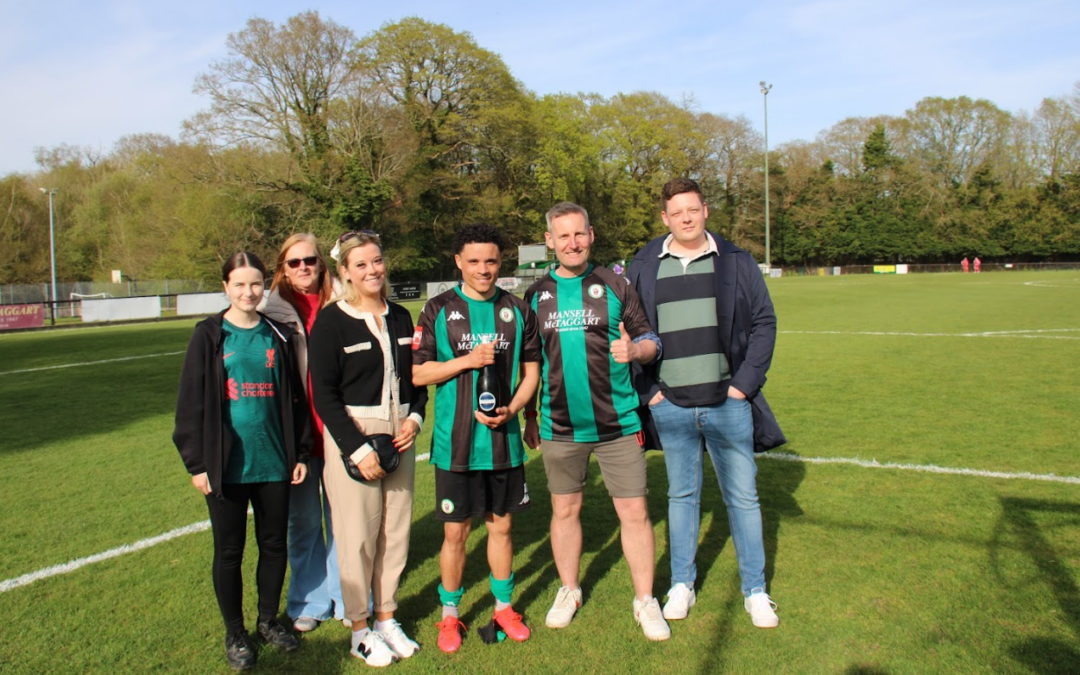Burgess Hill Football Club faces a dilemma which many grassroots clubs across the country struggle with: balancing the desire to grow against the needs of the community.
There’s nowhere you’d rather be: your local club, shoulder-to-shoulder with fellow supporters, and a cool drink in hand, as you watch the match on a sunny Saturday.
In Burgess Hill, fans proudly sport their green and black striped shirts as they squeeze through the turnstiles, eager for kick off.
A group of youths bang a drum, chanting for the Hillians with pride, while hands clutch in anticipation as the ball inches towards the goal.
The sweet scent of beer wafts out of ‘The Hillians Bar’, and inside, glasses clink as familiar banter fills the air. Scattered around the room in colourful armchairs people pick up conversations from where they left off last matchday.

A few days prior, in the now silent bar, the co-owner and Chairman of Burgess Hill FC, Vince Alfieri, 46, speaks about the importance of the community. “We are a football club that represents the town, we’ve got the same badge as the town council has.”
He points to an illuminated sign of the club’s crest which is mounted on the wall above him.
“We want local residents, and the community of Burgess Hill to be proud of their football club.”
Burgess Hill FC is a step 4 club, founded in 1882, which moved to Leylands Park in 1971.
The club’s closeness to residential areas has provided it with a loyal following.
At present, their first team attracts around 500 fans to their home matches and the junior section consists of 500 kids and 45 teams.
In 2018 Alfieri, head of his own junior club: Athletico Burgess Hill FC, proposed that his team join Burgess Hill FC as an independent juniors branch. At this point he became Burgess Hill FC’s Junior Chairman.
He then took over as Chairman of Burgess Hill’s senior division in February 2023.
“It was a situation where I think if I hadn’t taken it over it would have really struggled, and the thought of the town not having its football club that’s been going since 1882 was a real worry and concern,” Alfieri says.
Karen Taylor, 50, who has lived in the Leylands area for 47 years says the club used to be more involved with the community, with events every weekend and two pool and darts teams.
“Unfortunately, at some stage, football became the main priority, and they didn’t care about the residents or the community.”
Alfieri acknowledged the club’s past, saying: “The football club had an era where it wasn’t as proactive in trying to be a community club and that’s no disrespect to the previous owner. I think he had a lot on his plate and put a lot of his own money into keeping the club going.”
The club used to be on 5 year leases which meant it was impossible to get grants, but now they have been granted a 25 year lease by the council and have new plans for investment.
Currently, they are planning to fund advertisements and social events to increase people’s awareness of the pitch because it is tucked away between the Leylands and Maple Drive residential areas, and Bedelands Nature Reserve, meaning some locals are unaware of its existence.
“We get people that come to the gates thinking, ‘oh, there’s a football club in there!’ Now, I think they’re tourists, but then they say ‘we’ve lived in Burgess Hill for 30 years,’” Alfieri says.
The club recently held a bingo night which over 100 people from the neighbourhood attended and they plan to open The Hillians Bar for tea and coffee to those using Bedelands nature trail.
Additionally, a new development, the Brookleigh project, is building 3,500 houses on the northern boundary of the town, above Bedelands, which the club is hoping will increase turnout.
Alfieri also has plans for a 3G pitch which would allow the club to hold more matches and open the pitch to the community, bringing forward a disability team and letting more women, and junior teams play at the main club.
“We want to convert our grass to a 3G pitch so we can get more people using it and benefiting from it,” Alfieri says. “Our pitch can take just about one match a week, if that, because there’s been such poor weather that the ground gets completely waterlogged.”
The Brookleigh development will feature a ‘Centre for Outdoor Sport’ which will have a 3G pitch but Alfieri says this does not encompass the clubs needs.
“You can’t simply hire a 3G and have a disability team because there’s certain conditions that you need to meet.
“We’re losing money every single season being here, flipping the grass to 3G will enable us to get more income so that we can continue on.”
Alfieri explains that the 3G pitch will cost around £1.5 million, and the club plans to fund three quarters of that cost through grants and investors.

However, they are looking to the council to fund the remaining £350,000.
“From a town perspective and a district perspective, they’re going to get a facility that’s on their land with £1.5 million spent on it, and they just need to cover a little cost,” Alfieri says.
Peter Chapman, the Independent Councillor for the Victoria Ward in Burgess Hill, said: “Infrastructure will always be a limiting factor and the club has reached a stage where investment is needed to move up the levels, which has happened at clubs such as Worthing FC and Lewes who have moved ahead of Burgess Hill.
“It has been frustrating recently as all the sporting S106 money is going towards The Centre for Outdoor Sport which will feature some artificial pitches for football and rugby for grassroots use, yet our existing clubs in the heart of the town were not chosen to receive a penny.”
There are also concerns about whether the club will be able to handle a higher turnout throughout the week as residents have already complained to the council about fans parking dangerously on match days.
Karen says: “Parking on the verges, in front of people’s property, parking right near the bus stop on the grass, and on the corners of junctions is ridiculous and very dangerous.
“I have seen a lady in a wheelchair going down the main road unable to use the path due to irresponsible parking.”
The club recently secured funding for verge posts and petitioned the local council to paint double yellow lines. They also proposed trimming back the overgrowth to expand the overflow car park and create a one-way system.
Alfieri is determined to work with residents to resolve issues.
“We are very proud to represent Burgess Hill, it wouldn’t be a very proud thing for us to turn around and say, it’s not our problem, it’s yours,” he says. “Don’t forget, we go away to places all throughout Kent and sing the name Burgess Hill, we sing it everywhere.”
The referee’s final whistle pierces the air, at an unfortunate 0-0 score, but this does not dampen the mood of the Hillians, they cheer for their team regardless. It’s a standstill, perhaps indicative of where Burgess Hill FC stands: stalled due to funding constraints, but still cherished by their community.
Amy Stowe is a guest contributor for Semi-Professional.

